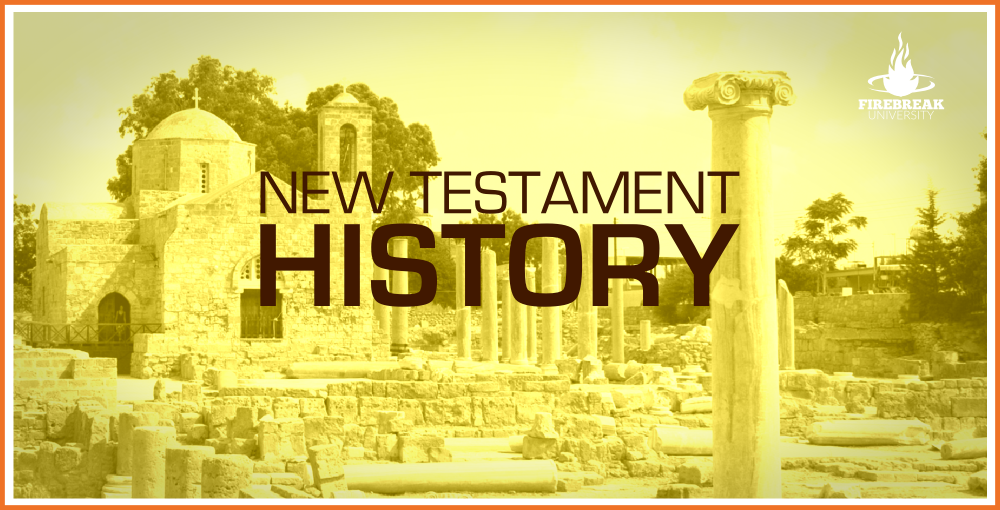Daily Bible Reading Philippians 1:19-23
Philippians 1:12-18
Philippians 1:1-11
Betrayal: Who Really Was Responsible For Christ’s Death 1
Betrayal: the very word stirs up negative emotions within our hearts. Its meaning goes against every ideal we hold dear whether it be as a husband, as a father, as a citizen or as a friend. Perhaps the greatest betrayal of all is the betrayal of Jesus Christ recorded for us in Scripture.
But who really was responsible for Christ’s betrayal? This question has been the source of great controversy down through the centuries. In the Bible, the word betrayal is translated from the Greek word paradidomi (pronounced par-ad-id’-o-mee). It is the overwhelming use of the word in the New Testament. In relation to Christ’s crucifixion, the Bible uses this Greek word to describe the decisions of several people or groups of people. Although each had a part in the responsibility of Christ’s death, the Bible also tells us definitively who really was responsible.
As we prepare to celebrate the resurrection of our Lord Jesus Christ, it is good to be reminded of the role each played in His death. One of the darkest aspects of Christ’s death was His betrayal. It was pictured in the betrayal of Joseph by his brethren, prophesied of by many of the Old Testament prophets (see Zechariah 11:12-13 & Psalm 41:9), and promised by the Savior Himself:
And while they abode in Galilee, Jesus said unto them, The Son of man shall be betrayed into the hands of men. Matthew 17:22
The Accusation
The Greek word for betrayed in this verse comes from paradidomi. Although the word is used over 120 times in the New Testament, the overwhelming majority is used in connection with Christ’s death. It means to deliver up into the hands of another; to betray; and it used by God to place responsibility on those who were responsible for delivering up Christ to the cross. It is evident that part of the suffering and humiliation of Christ’s atonement was meant to include betrayal. But who does the Bible lay responsibility on for this betrayal and who really was responsible for Christ’s death?
The Question of Guilt
This question has been hotly debated throughout the centuries since. Some blame Judas exclusively. Others have laid blame on the Jews for their involvement, even going as far as persecuting today’s generation for the actions of people two thousand years ago. Some say we all had a hand in it since we have willfully sinned.
The Great Betrayal
The Bible uses the word paradidomi of several people and groups of people in relation to the betrayal involved with Christ’s crucifixion. Some of them are well known; others might surprise you. But the Bible also clearly tells us who ultimately was responsible for the death of Christ – in other words – The Greatest Betrayal.
On Trial
And so, for the next few weeks, we are going to put each party on the stand and the Bible will be our chief witness. We will examine exactly how much responsibility each party had in the crime and what their motivation was behind their actions. Ultimately, we will determine who was guilty of the greatest betrayal and what the motivation could possibly be for such a deed.
On the stand next week: Judas Iscariot
6 Surprising Christmas Facts You Thought You Knew

6 Surprising Facts About the First Christmas
- The Wise Men Came Later. It is generally agreed upon that the wise men were not present the very night Christ was born; however, it was not that much later. Many have assumed they arrived two years afterwards because of Herod’s decree to destroy all male babies of that age and under. However, there is substantial evidence that Herod died shortly after Christ’s birth which would put the wise men at the scene much earlier than most people assume.
- Bethlehem was a very small village at this time with a population between 100-200. It is very likely that there was only one “hotel” or public guest lodge, and so it would not have taken many visitors before there would be no more room.
- There were many astronomical “signs” in the heavens in the immediate years before Christ’s birth. However, most believed in the polytheistic gods of the Greeks and Romans, and therefore, ascribed these signs to Augustus who was celebrating 25 years of peaceful rule in the same year that Christ was born.
- The taxation mentioned by Luke was a tax associated with a census ordered in collaboration of the celebration regarding Augustus’ reign. There has been much debate about this decree throughout the years, but this account of a census fits perfectly into the details of the story.
- Both Joseph and Mary were of the house and lineage of David. About 100 years before Christ’s birth, a small group of Davidic descendants migrated back to Israel and founded two villages: Kochaba (on the east of Jordan) which means village of the star and Nazareth (on the west of Jordan) which means village of the branch.
- The genealogies of Christ, preserved in Matthew’s and Luke’s accounts were assisted by these Nazarenes, who kept detailed genealogies because they believed strongly that the Messiah would come from their midst. They were right, but when Christ presented himself to them, he was not what they were expecting. They were the first to try to kill Christ by shoving him off of a cliff above the village.
2 Important Details
There are 2 details that God wanted the Shepherds to see and by extension all of us today! These details, I believe, are the 2 most important details about Christmas that we should have a clear understanding about.
Read with me Luke 2:12 and see these 2 details that were to be a sign unto them:
“And this shall be a sign unto you; Ye shall find the babe wrapped in swaddling clothes, lying in a manger.”
Clothes have always been a sign to people. From the moment Adam and Eve sinned, they knew they were naked, and so they made themselves a set of clothes from the fig leaves. Yet God knew those clothes were unsatisfactory, so He made them a coat from animal skins. Picturing the first death, albeit a substitute death, of many to come until the lamb of God himself should be sacrificed for the sins of the world. The Bible mentions special clothing to be worn by priests, and special clothing to be worn by kings! It speaks of the attire of a harlot, and it speaks of the attire of a prophet! When Christ was crucified, it speaks of his robe, and when arose from the grave, it speaks of the linen cloths and napkins.
So when his clothing is mentioned here at his birth, let us take a second look and see what might these swaddling clothes be a sign of. Swaddling clothes were long strips of cloth. Some have suggested that swaddling clothes were used only by wealthy people, and others have suggested that swaddling clothes were also used for corpses, and I can see the how that could fit into the narrative, but personally, I could not validate these two scenarios beyond a shadow of a doubt. However, there is one scenario that remains open and is no doubt a major sign. When a baby was wrapped in swaddling clothes, they were tightly wrapped to restrict nearly all movement. And it doesn’t matter the tightness of the bind, the very fact that the all-powerful God who has existed from eternity past to eternity future could indeed ever be bound is beyond human comprehension!
In the garden of Gethsemane, when Christ was betrayed, Peter struck off the ear of Malchus, the servant of the high priest, Jesus responds with a rebuke to Peter, and he says in Matthew 26:53,
“Thinkest thou that I cannot now pray to my Father, and he shall presently give me more than twelve legions of angels?” Can we not think about this for one moment?
Christ could have called 10,000 angels to destroy the world and set him free! Even more so, for he could have called 12 legions of angels! Yet, Christ laid down his life willingly. My friends, were not those same angels attending his birth? Could he not have freed himself from the limitations which were placed upon him? I believe there was more than swaddling clothes that were constraining him at birth! There was more than human flesh that was restricting him here on this earth! Can I say…There were more than nails that were holding him to a cross! Jesus Christ declares in John 10:17-18, “… I lay down my life, that I might take it again. No man taketh it from me, but I lay it down of myself. I have power to lay it down, and I have power to take it again. This commandment have I received of my Father.”
What was it that took Heaven’s Prince from eternal glories down to a manger scene…but love! What was it that took Heaven’s Prince from the lowly manger scene to a cruel cross…but love! 2 Corinthians 8:9:
“For ye know the grace of our Lord Jesus Christ, that, though he was rich, yet for your sakes he became poor, that ye through his poverty might be rich.”
But lest we overlook the manger, can we not observe a simple point here as well? God has always spoken to us in terms we understand. To the fisherman Peter, he says – Follow me and I will make you fishers of men! To the woman at the well, he says – I am the living water! And to Shepherds here at the Christmas scene, He says you’ll find the babe lying in a manger! The humbleness of Christ’s birth was not overlooked, but the powerful sign to the shepherd’s was that the Lamb of God was here!
Yet this Lamb was also the Good Shepherd! And here at his birth, he demonstrated the very truth he was communicating to all his followers as he taught them in John 10:15, “… I lay down my life for the sheep.” Here at birth, he was to be found lying in manger. And at his death, he was to be laid in a tomb! Christ laid down his life that we might be saved! And I stand in awe of the power of God, for he willingly was bound that we might be free! A lot more meaning comes to life when you read the words of Christ in John 10:17, “… I lay down my life, that I might take it again.”
He was bound at birth! He was laid down at birth!
He was bound at death! He was laid down at death! But on the 3rd day, he was loosed, and he arose. And because of him, we too can be freed, and we too will rise again!
With so many Christmas carols to sing, maybe we should look at one of the originals! Simeon was right on when he said he to Mary, the mother of Jesus in Luke 2:34, “… Behold, this child is set for the fall and rising again of many in Israel…”
Merry Christmas!
Nautical Terms & The Epistle of James
The Proverbs of the NT
Many have called the Epistle of James the “Proverbs” of the New Testament. One reason is because of the practical teaching found in its chapters. Another reason is because of its frequent use of natural illustrations and human interaction as a vehicle for spiritual truth. One such example is the nautical terminology found throughout the the Epistle of James.
One key verse in the first chapter of this epistle reads:
Every good gift and every perfect gift is from above, and cometh down from the Father of lights, with whom is no variableness, neither shadow of turning. James 1:17
The Keystone Verse
This verse is often called the keystone verse of the epistle. For those not familiar with term keystone, it refers to the stone central to holding together a bridge or archway. I know this because my wife is from Pennsylvania, The Keystone State. James 1:17 is called the keystone verse because it holds everything in chapter 1 together. And how does James tie it all together? By using several nautical references to the ancient art of navigation in this one verse alone. The stars, with their fixed points in the sky, provide guidance and consistency by which ancient sea vessels could navigate the waters. Essentially, James was helping his audience navigate successfully through their immediate storms of persecution and suffering. This was his object for writing – the illustration, i.e. the nautical terminology, was the vehicle.
Ship Ahoy!
And this was not the only time James uses such terminology in his epistle. He references the waves of the sea being driven and tossed. He commands “Do not err,” a term meaning “to drift away.” He reminds that the untamed tongue is like a ship without a rudder. The language of the epistle is so descriptive that, if your not careful while reading, you might imagine yourself on one of those ancient ships – on the Sea of Galilee – during a storm.
Then again, maybe that is exactly what James had intended all along for these early Christian disciples. He would have learned it from the best Teacher of all!
Just, Like His Father

James, Joseph & Jesus
James, the author of this epistle, was someone very familiar with the Lord Jesus Christ. Being the eldest son of Joseph, he grew up in the same household as Jesus. The Scriptures tell us very little about Joseph, James’ father. What little we know comes from the very first Christmas.
The First Christmas
In the account of Christ’s birth, Joseph is described as a just man (Matthew 1:19); the Greek word dikaios is translated both as righteous and as just. Today, the term just is used almost exclusively to describe someone’s decision making i.e. a just judge. Throughout the Christmas story, Joseph consistently made the right choices no matter how hard or difficult the decision was. He was willing to treat Mary respectfully even though appearances looked bad; he decided to take her as his wife knowing full well what others would say and think; he relocated to Bethlehem and then again to Egypt. Time after time, Joseph made one just decision after another.
Like Father, Like Son
The same can be said of his son James as well. He was known throughout Jerusalem as a righteous and devout man. Many called him James the Just. Historians tell us that when forced by the high priests to renounce Christ as the Messiah in front of the large crowds that had gathered for the Passover, James refused, deciding to use the opportunity to reaffirm his faith in the Lord Jesus as the Messiah. It led to his martyrdom – another right decision in the face of difficult circumstances – just like his father. I guess you can say that the apple didn’t fall far from the tree.
James the Just Bible Info-graphic
Our James the Just Bible info-graphic is available as a free download here:
Living Sacrifices
Romans 12:1 says:
I beseech you therefore, brethren, by the mercies of God, that ye present your bodies a living sacrifice, holy, acceptable unto God, which is your reasonable service.

Three Wonders of Heaven
Christ, Our Substitution
The following quote is from The Cross of Christ by John Stott:
Divine love triumphed over divine wrath by divine self-sacrifice. The cross was an act simultaneously of punishment and amnesty, severity and grace, justice and mercy. Page 159


